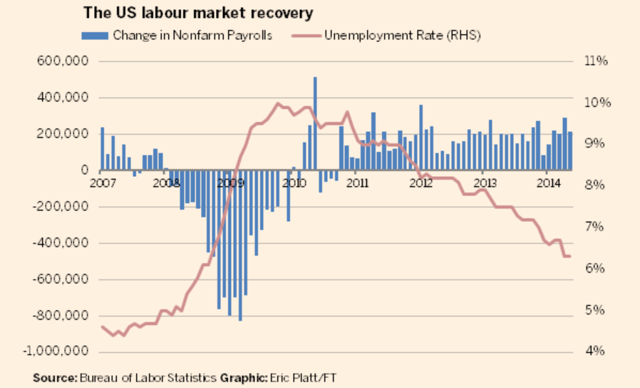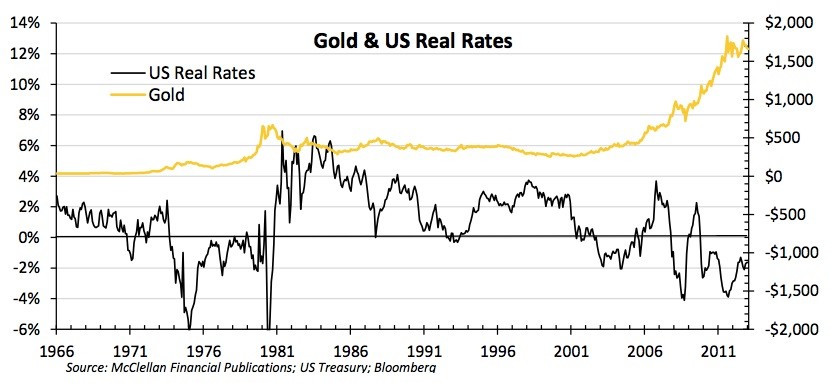Rising interest rates and precious metals
Post on: 24 Февраль, 2016 No Comment

Alasdair Macleod 11 March 2011
Concerns are growing that dollar interest rates are due to rise in the coming months, which will obviously bring about fundamental changes to the valuations of all asset classes, including precious metals. However, precious metals should weather rising interest rates best. At the other end of the risk spectrum lies government bonds, and the most powerful endorsement of these concerns is the elimination of all US Treasuries from the PIMCO Total Return Fund. This fund is the largest bond fund in the world and is dollar-based, so this is a very, very important signal for both the Fed and other bond investors.
We do not know to what extent PIMCO’s investment committee shares the concerns expressed in my article of last week about governments losing control of the markets. but they obviously expect a significant rise in yields all along the curve. Higher yields will affect all conventional asset classes for obvious reasons, but the effect on precious metals is not so clear cut. There are two ways in which rising interest rates affect any asset class, including gold and silver: these are the higher risk-adjusted returns available on investment alternatives, and the financing cost of holding an investment position.
Physical gold and silver, except leasing and backwardation opportunities, offer no yield, so an increase in interest rates reduces their relative attraction to other asset classes. While this may deter investors from increasing their exposure to this asset class, their very limited exposure of less than one per cent, means they have little to actually sell. Public, as opposed to portfolio exposure is mostly through ETFs, which can sensibly be classified as hoarding, rather than investment; so many, if not most of ETF shareholdings are not subject to portfolio management considerations. Furthermore there is a tendency for investors to regard precious metals as an insurance policy, so higher returns on other asset classes is not in itself a reason to sell.
Greater selling pressure will be exerted on geared portfolios, and in this respect, ownership of physical metal is limited. The hedge fund industry does have some physical gold exposure, but this is generally ungeared and restricted to a small number of specialist funds. Almost all the geared activity by hedge funds and other speculators is in the paper markets, particularly futures and options. But margin requirements mean that both longs and shorts are equally affected by a rise in borrowing costs, so higher interest rates are basically an incentive to reduce positions overall.
However, the incentive is not even. The cost of finance for futures margins is both lower and its availability is greater for the large banks, which are almost all short. They can therefore be expected to use higher interest rates as an opportunity to increase their positions and force prices lower.
The foregoing gives us a brief technical summary of the precious metal markets in the event of rising interest rates. We can conclude that selling pressure on the physical will be generally limited, and selling is more likely to be seen in the futures markets. To assess the overall importance of these factors, we must broaden the debate to consider the impact of the wider financial and economic background. Of far greater relevance is the impact of rising rates on the dollar, and this is what we must next consider.
On the face of it, rising interest rates will attract investment flows into the currency, making it rise. Dollar bulls might also argue that significantly higher rates leading to asset liquidation would also be good for the dollar, since dollar cash represents the risk-free position for most international portfolios. There is some logic in this, but the UK’s experience in the 1970s strongly suggests this might not be the case.
The various UK governments of the time tended to run uncomfortably high budget deficits, funded by sales of gilts and an expansion of money supply. When there was insufficient demand for gilts at the prevailing yields, the Bank of England was faced with a choice: raise interest rates, or print money. Under political pressure not to raise rates, and being of Keynesian persuasion, they always chose the latter as a temporary measure, in the hope they could buy enough time to lean on the pension funds and insurance companies to buy more gilts with their accumulating cash.
Unfortunately, not selling gilts and printing money heightened inflation fears among fund managers, and crucially, foreign holders of sterling. This was the basis of a self-feeding cycle of currency weakness leading to higher raw material costs, rising stagflation fuelled by printed money, and to falling real interest rates due to increasing inflation. So yet higher gilt yields were required for successful funding.
The BoE was always behind this curve, raising interest rates insufficiently to break the funding log-jam. Eventually, they would be forced to raise interest rates suddenly and substantially to regain control of the gilt market. Gilts would then be sold in greater than needed quantities, sterling would recover strongly and interest rates would fall.
A repeat of this uncomfortable experience is now faced by the US today. PIMCO’s investment strategy is an advance warning of a buyers’ strike, whereby Treasury auctions will fail to attract real buyers. Their failure may well continue to be covered up for a time through QE2 to QEn, or by central banks buying each others’ issues and other such actions; but now that stagflation has become a real threat, we must consider the possibility that attempts to overprice Treasuries by these means will backfire badly on the currency.

We must consider the consequences of the Fed always being too slow to raise interest rates, just as the BoE was in the 1970s. We must also consider the consequences of money being deterred by a rising interest rate trend and its effect on bond and asset prices, rather than attracted by better nominal returns. The political and economic pressures not to raise interest rates sufficiently are greater on the Fed today than they were on the BoE in the 1970s. Furthermore, America has the added burden of being deeply ensnared in a debt trap, where higher interest rates increase the future borrowing requirement disproportionately.
The betting has to be that the Fed will try to keep real interest rates negative by any means. To fail to do would bring forward a national debt crisis that would most probably break the banks, whose loan collateral would then be collapsing in value. With or without a banking crisis, government revenue would collapse and its expenditure escalate. So long as this is the case, further inflation or stagflation is the most likely outcome, which is generally beneficial for precious metal prices in dollar terms.
America is not alone with this developing problem: the UK, despite her attempts to rein in public spending, faces the problem as well, and the EU is a smorgasbord of escalating funding requirements. For this reason, the hedge against a falling dollar cannot be to find refuge in these currencies. If anything, the US, UK and EU make the problem far worse for each other by having to compete for genuine funds. The only other large and liquid alternative, the Japanese yen, is not now seen as a lower-risk alternative and other currencies are too small to absorb the large money flows seeking protection from the collapsing purchasing power of the dollar, euro and pound.
It is against this background that precious metals will be valued. The markets for them are simply too small to absorb the trillions seeking to dodge the deteriorating fundamentals behind the major currencies. This does not mean they will be overlooked: rather, the potential for them to rise is greatly enhanced. Precious metals markets will not be too small for portfolios, whose exposure as a whole is estimated to be only 0.6%. They can readily increase their exposure through ETFs and mining shares at the expense of other asset allocations. Nor will the desire of Chinese and Indian hoarders diminish, instead it will accelerate.
The question remains, to what extent will the banks running short positions in precious metals on the futures markets manage to manipulate prices downwards, on the basis that rising interest rates should lead to lower prices? There is little doubt they will try it, but so long as real interest rates adjusted for both actual and prospective inflation remain negative, the strategy seems certain to backfire.
We can therefore conclude that rising dollar interest rates will be the result of a drop in the currency’s purchasing power, and not a tool used by the Fed to support the dollar by taking advance action. So long as this remains the case the bull market in precious metals will continue its powerful course.














